All sorts of stories have been spun around the half-mythical P.1000 super-heavy tank. Enthusiasts even made up a name for it: Ratte, German for 'rat'. It's hard to get to the truth under all the tales, but we can try. Such a tank was really designed, and was really considered by the Third Reich. In addition, models of two variants of the P.1000 were built.
A monster like for «genosse Duchatschewski»
The story of Edward Grotte, the creator of the P.1000, is no less interesting than his tanks. Herr Grotte's career in the Soviet Union is worthy of a separate article, at the very least. Here, the talented designer created a very original medium tank. The TG tank had powerful armament, thick armour, and a convertible drive. The originality of the project, including an engine Grotte designed himself, was the cause of its downfall. Nevertheless, one can say with certainty that the TG was more promising than German designs that were being tested at the TEKO proving grounds around that time.
Grotte and his crew did not stop at just the TG. The German designer took part in the development of the T-35, at the very least as far as the documents claim. Grotte developed a good relationship with Tukhachevskiy, who gave him a task that became the starting point for the P.1000. The idea was that of a super-heavy tank, whose mass kept on growing and growing. The project reached its zenith as a «coastal defense tank», which Grotte prepared a draft for in March of 193. The drafts were sent along with a letter addressed to «genosse Duchatschewski». The 1000-ton project was examined by the Red Army UMM (Directorate of Motorization and Mechanization). A 500 ton vehicle was also proposed at this stage. However, the work on the mega-tank ended here. It was senseless to spend enormous sums of money on toys, especially since the 90 ton T-39 tank already cost 3 million rubles.
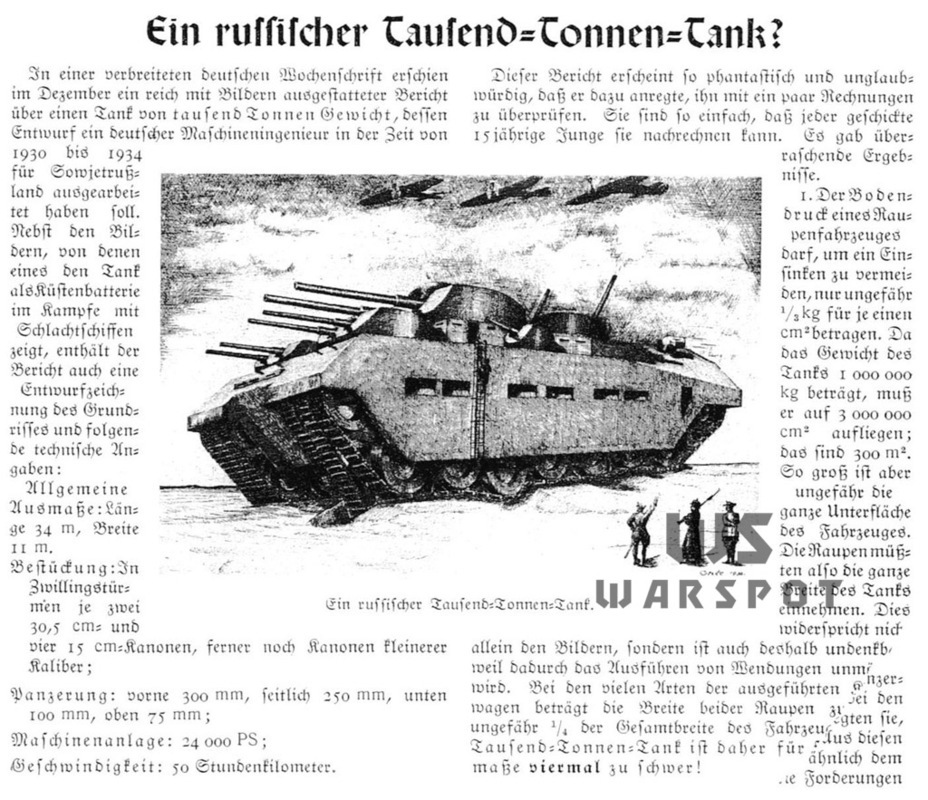
German specialists began departing from the USSR after Hitler came to power. Edward Grotte left the Soviet Union as well. Little is known about what he did in the late 1930s. He filed several patents to do with engine and transmission designs. It is likely that Grotte continued to work on military vehicles, but not tanks.
After returning to Germany, the engineer began a protracted dispute with Günther Burstyn, the father of Austrian tank building. For instance, in the German Kraftfahrkampftruppe military magazine September 1937 issue Grotte told in detail about his work in the USSR, especially about a 1000 ton tank. Archive documents suggest that Grotte's tale was far from Baron Munchausen's, and had a significant grain of truth.
5 years later, Grotte, like Otto Merker, accepted Albert Speer's proposal and joined his team. Grotte (and Merker) worked on naval projects. The former tank builder had a fairly important role as the «special authorized agent on issues of submarine building of the Reich Ministry of Armament and Munitions».
Grotte was not some kind of dreamer that approached Hitler with an extravagant idea of a super-heavy tank. In fact, it was the opposite: based on correspondence, it was Hitler who initiated the work on the P.1000. In June of 1942, Grotte received this order not from the Reich Chancellor himself, but from Speer. According to Walther Spielberger's research, Grotte first received Hitler's proposal on June 22nd, 1942.

In the Navy
Most information on the P.1000 is found in the memoirs of surviving German commanders and Third Reich leaders, largely Speer. However, Speer carefully skirts the fact that this gigantomania received if not his support, then at least his tolerance. In this regard, Guderian's memoirs appear to be closest to the truth. The general spent some time as the chief inspector of the tank forces and did his best to combat these monsters.
«Hitler moved on to important questions in tank building, agreeing with the principles that the most important thing is heavy armament, then high speed, and then thick armour. However, he was a man of two souls, since he also thought that thick armour was a necessary component. His fantasies transformed into gigantomania. Engineers Grotte and Hacker received orders to design a 1000 ton giant tank. For Porsche's «Tiger» tank the thickness of the floor armour was given as 100 mm, and the armament consisted of either the 150 mm L/37 or 100 mm L/76 guns. Professor Porsche promised he would produce the first vehicles of this type by May 12th, 1943."
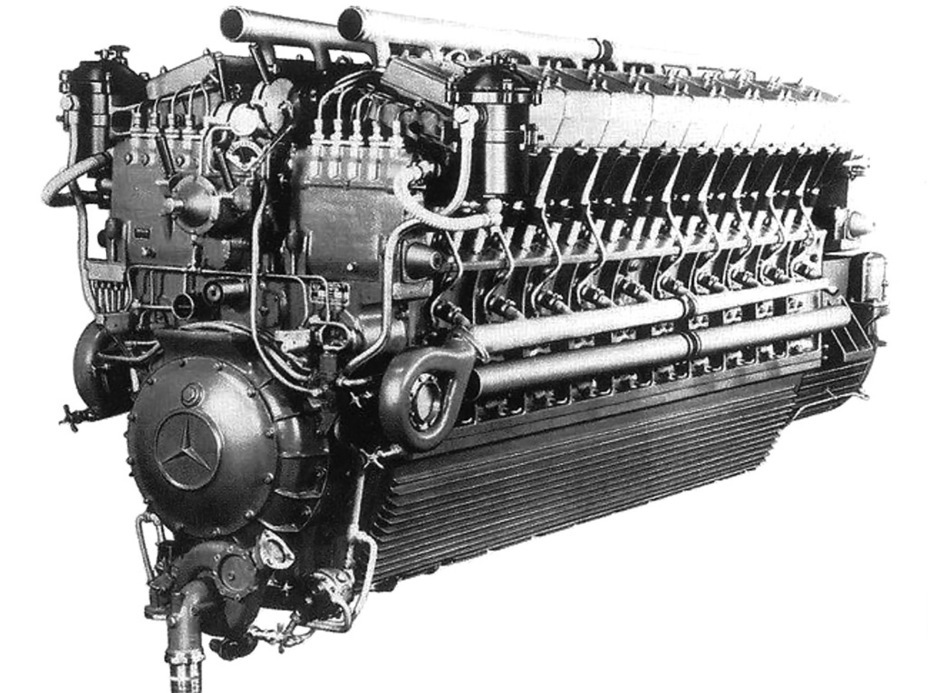
The aforementioned Oscar Hacker, like Grotte, was no ordinary engineer. He was the director of the Steyr company, and also a member of the Tank Commission, the same one that was on-and-off-again led by Ferdinand Porsche.
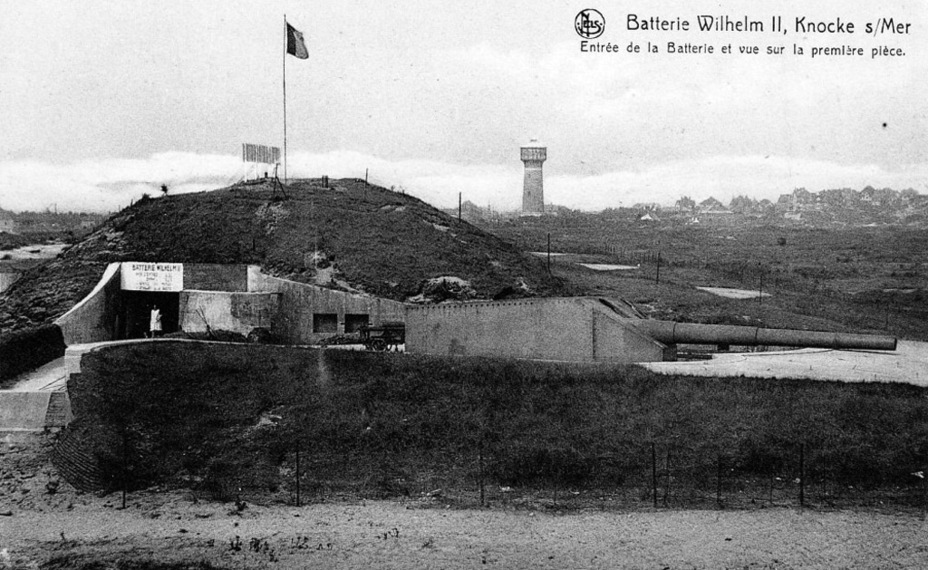
Grotte, as Speer's submarine advisor, was very well aware of the Kriegsmarine's most cutting edge projects. Work on the P.1000 entered the practical phase on July 17th, 1942. On that day, Grotte send a letter to Erich Müller, nicknamed «cannon Muller», the chief designer at Krupp.
«I received a task from the Fuhrer through Reich Minister Speer to design a super-heavy tracked combat vehicle likely weighing several hundred tons. You may know that I am a specialist in production of military vehicles. Such a vehicle would need a 16,000 hp power plant, provided by a group of torpedo boat engines. The idea of placing the transmission between the engines and tracks still needs designing. It looks like production difficulties will still need to be overcome. Friedrich Krupp A.G. can produce excellent super-powerful gearboxes, and it would be desirable to receive consultation from your specialists.
In addition, the supreme command of the Navy informed me that your factory in Essen is working on an artillery battleship to be used along the west coast. We know that the work has moved far, but the current prioritization groups stand in the way of the project's timely completion. Perhaps it will be possible to join the two projects into a high priority one. This topic demands an in person conversation.
I would be in your debt if you would give me the opportunity to tell you about my ideas an involve various special departments of Friedrich Krupp A.G. for consultation regarding the execution of my project to the degree that your current work would allow.
I await your answer with the greatest interest."
The letter ended with the traditional Nazi greeting.
Such a radical turn in the fate of Grotte, who less than 10 years prior worked for «genosse Duchatschewski» in the USSR should not be surprising. At the time, many in Germany joined the Nazi party to obtain a comfortable and high ranking position. The abbreviation NSDAP was often jokingly decoded as «Na, suchst du auch Pöstchen?» (Are you also looking for a post?)
Now Grotte was working tightly with Krupp's leadership. Thanks to this, correspondence relating to the P.1000 project remained in Krupp's archives. The involvement of a high ranking figure like Muller indicates that the German leadership treated the P.1000 project very seriously.
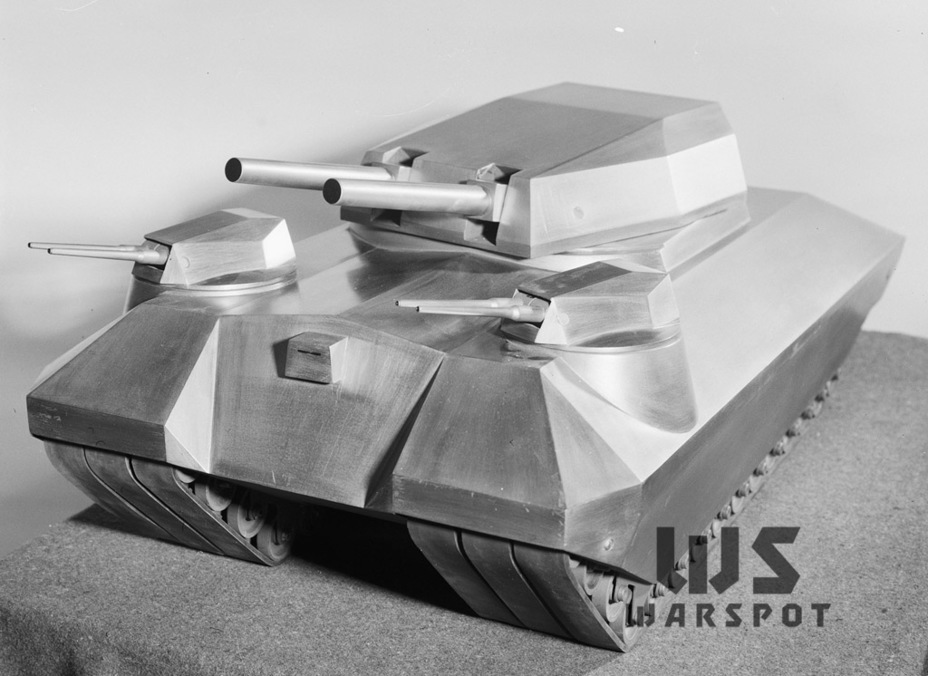
A meeting dedicated to the development of the super-heavy tank was held on August 13th in Essen. Grotte first voiced the concept for this vehicle. Initially, it weighed 800 tons, was 35 meters in length and 14 in width. Grotte proposed two variants of the running gear. One had three tracks with 1200 mm wide links. The length of the contact surface was 21 meters, and the ground pressure was 0.54 kg/cm². Calculations showed that the pressure on the tracks was 400 kg/m. The suspension and running gear were not worked out in detail, but Grotte calculated that 3 meter drive sprockets were needed.
Two engine variants were considered. The first used two two-stroke MAN V12Z 32/44 marine diesels, 8500 hp each. These 24-cylinder engines were built for Type 42 destroyers, each of which would have 6 of the engines. An alternative was a bank of 8 20-cylinder Daimler-Benz MB.501 engines. These 2000 hp diesels also had a naval origin: they were used on German torpedo boats. An advantage of the second option was that the combined weight of the engines was 34 tons, while a pair of MAN V12Z 32/44 engines weighed 128 tons.
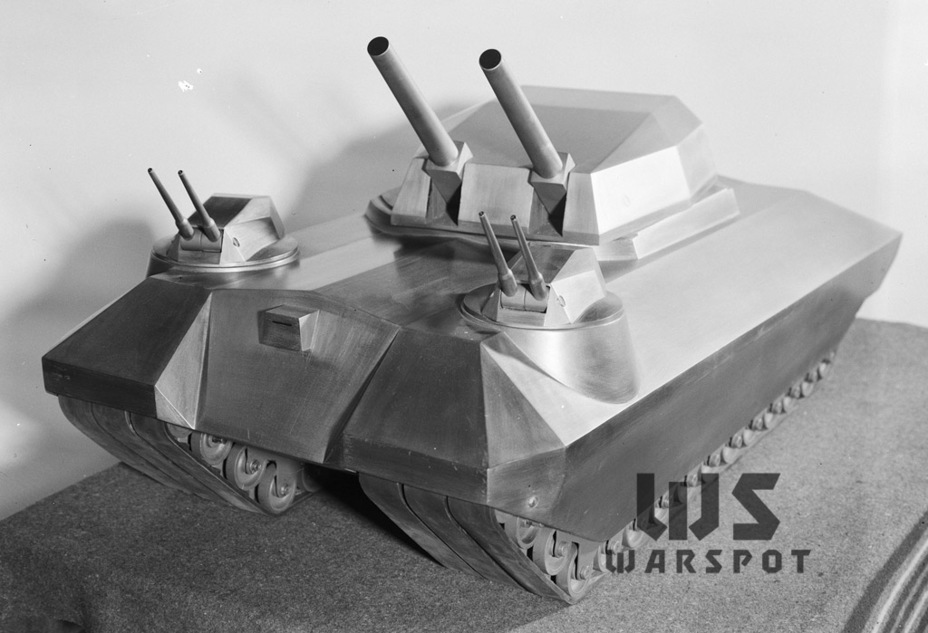
Grotte based his work on his prior efforts for the USSR. He understood very well that without Krupp's help he would accomplish nothing. That is why he asked Muller for 20 men to work on his project. Muller was not opposed to this, since Krupp effectively became the developer of a super-tank. However, the chief designer considered allocating 20 men at such an early stage senseless, as Grotte had not yet finished the draft project. A number of issues were yet to be resolved, such as the selection of armament. There is a myth that the P.1000 was built to use the Gneisenau «pocket battleship» turret. That is not the case. Based on the minutes of the meeting, Grotte had no idea what his land fortress would be armed with. The only thing he had obtained from the Kriegsmarine at that point was the blueprints for a coastal battery with 305 mm SK L/50 guns. This explains why various models of the tank have different guns in the main turret.
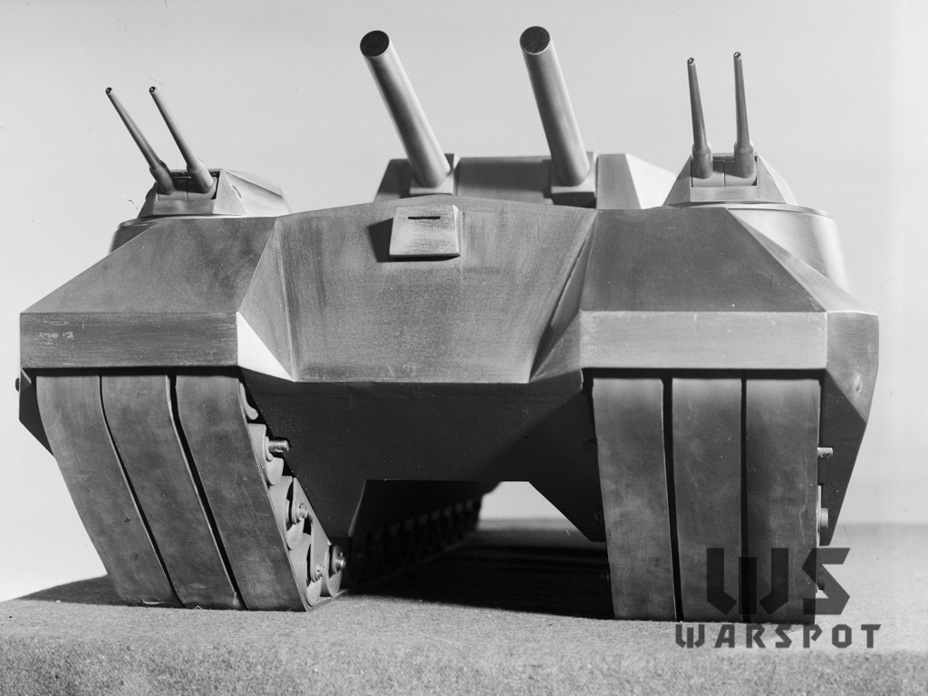
The three-turret version was likely the first variant of the super-heavy tank. Photos of a model built under Grotte's guidance in the fall of 1942 survive to this day. Only the general design of the suspension is common with the later P.1000. The main turret, shifted towards the rear, was built from scratch. It would house a pair of 30.5 cm SK L/50 guns. Two turrets with dual 128 mm 12.7 cm SK C/34 guns were placed up front, typical armament for German destroyers. Ideas of using tank turrets, especially Maus turrets, are a fantasy of some modern authors. The Maus turret that we know today appeared half a year after the P.1000 project died. 128 mm guns in the front plate are a part of the same fantasy.
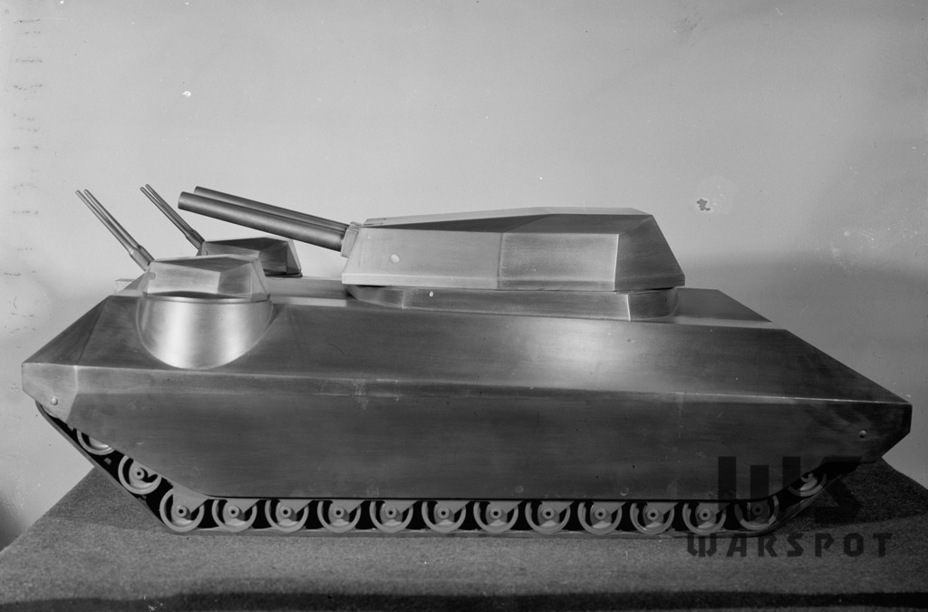
The hull of the first variant of Grotte's tank was similar to what he designed in 1933. Of course, it was not a complete copy. However, a number of elements such as the V-shaped roof of the engine compartment migrated from the older project. Even the layout with a rear turret was used by Grotte in one of his preliminary designs for a Soviet super-heavy tank. The same goes for shifting the engine towards the front of the hull.
Small cannon and AA gun turrets were placed on the massive panniers, which transitioned into skirt armour that covered the running gear. The front of the hull had a driver's cabin. The 3-turret variant had sloped sides that would increase resistance to enemy shells and introduce a chance of ricochet.
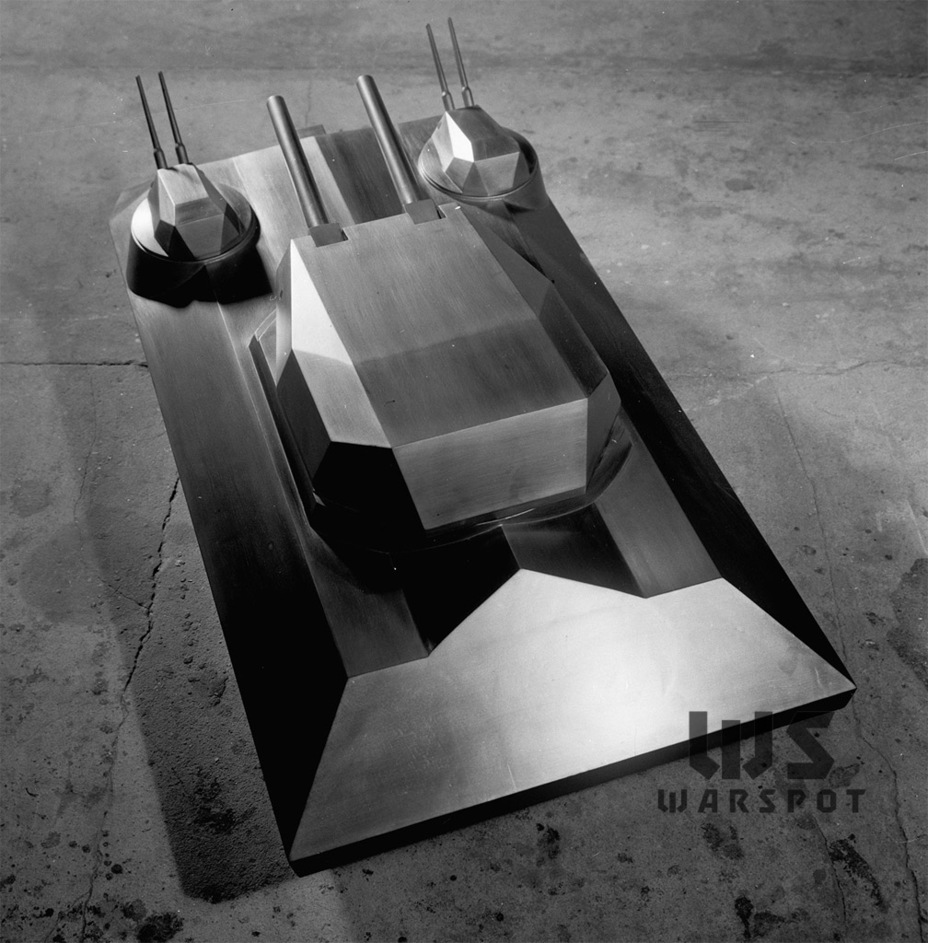
The running gear was also a further development of one of the 1000-ton Soviet designs. The three-turret variant had 12 sets of six wheels per side, plus two in the front and the rear, to tighten the tracks and cushion impacts against vertical obstacles. The suspension elements were pushed as far down as possible to make servicing them easier. 3 tracks were installed on each side.
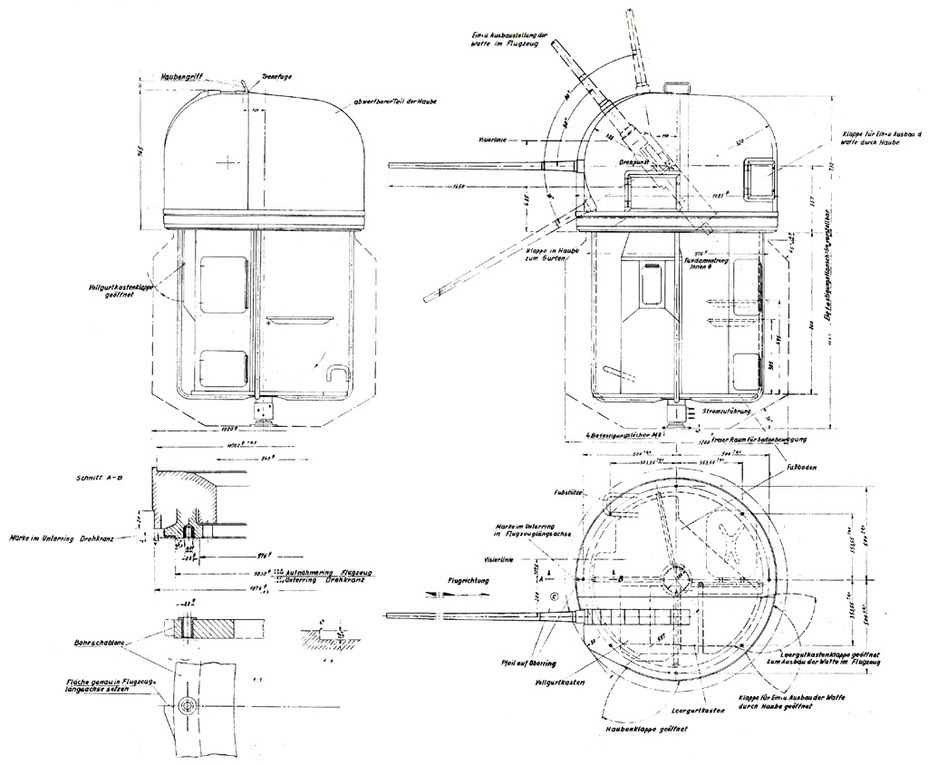
Grotte improved the model as development went on. Initially, the small 128 mm gun turrets also served in the AA role. It was clear that such armament was insufficient for this purpose. Less bulky weapons were needed to combat aircraft. Grotte found help from the German aircraft industry: Blohm & Voss hydroplanes used HD 151 AA turrets (Hydraulische Drehringlafette 151) with hydraulic drive. The turrets were armed with 20 mm MG 151/20 autocannons.
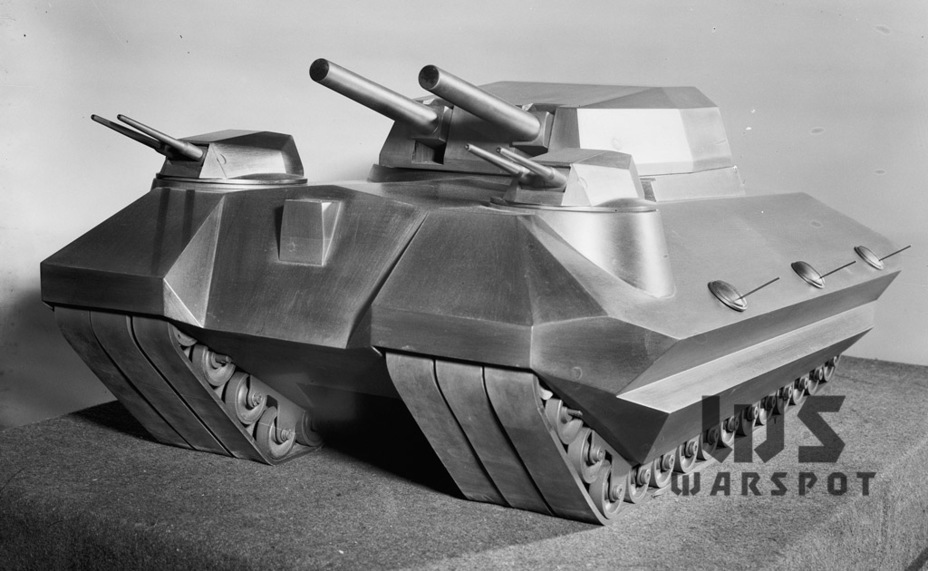
The reworked project received eight HD 151 turrets. The first variant of small caliber armament is hard to call a success. Grotte placed 3 turrets along each side and two in the rear. This created many dead zones, especially in the front.
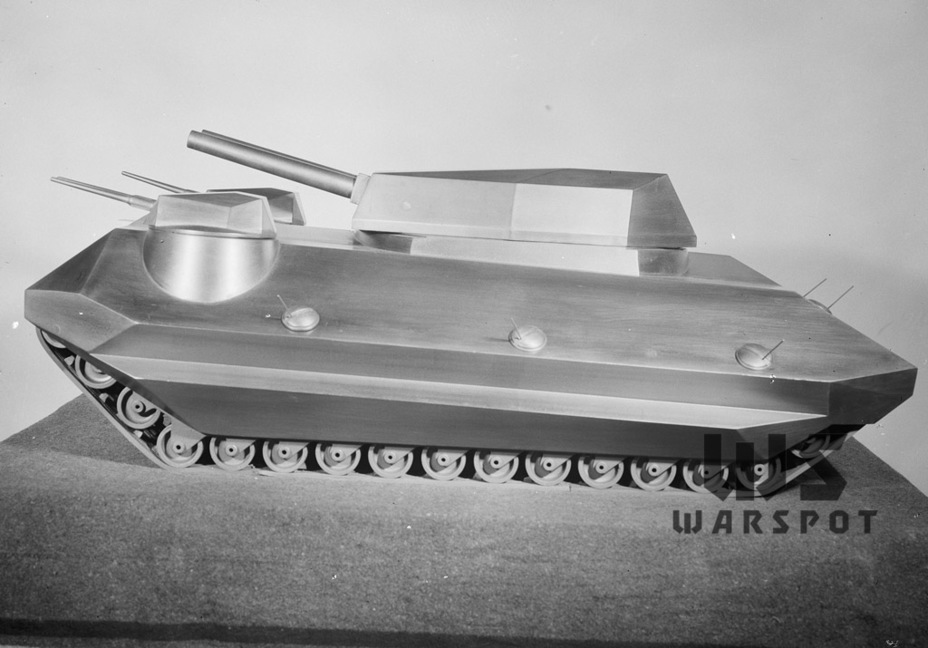
Towards the end of September of 1942 the project changed again. A new gun had an effect on its metamorphosis. This was one of the gun turrets of the Gneisenau battleship. On the night of February 27th, 1942, the battleship was attacked by British bombers while undergoing repairs in Kiel. 1000-pound bombs rained on the Kiel shipyards. One of them hit the deck of the Gneisenau right in front of the A turret (Anton). 112 men were wounded by the explosion and 21 were killed. The roof was torn from the turret and the turret jumped up by half a meter. Elements of the armour belt and lining were damaged. The examination commission concluded that the ship was out of action for two years. The bomb ended the career of the Gneisenau as a warship.
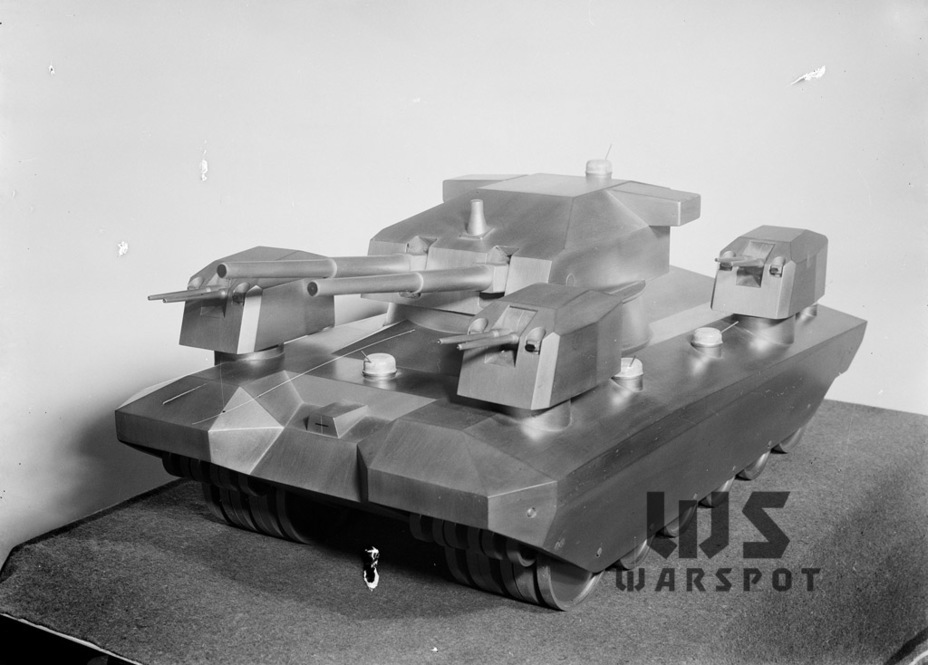
Initially, there was a plan to modernize the disabled battleship, replacing its 283 mm SK C/34 guns with the 380 mm SK C/34. The number of guns in each turret was reduced from three to two. The idea did not gain traction. On July 1st, 1942, the Gneisenau's crew was transferred to other ships, the armament was removed, and a decision was made to use the ship as a blockship. This is where the idea to use one of the turrets to arm a super-heavy tank that was a part of a coastal defense network came up. However, the initial three-gun turret was too heavy.
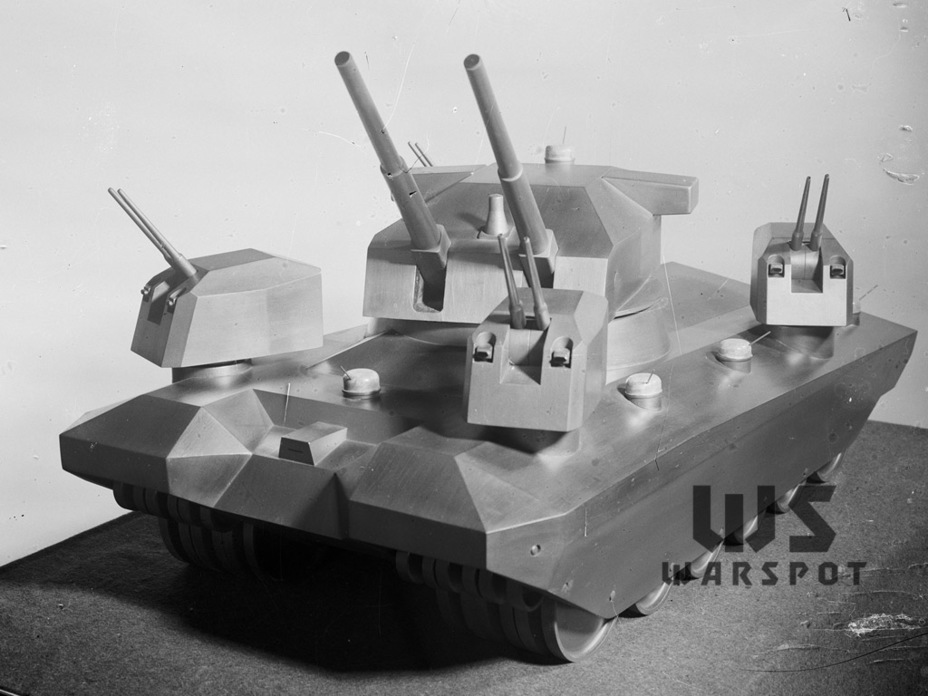
A five-turret model of the tank was build. Grotte finally gained access to data on the Kriegsmarine's artillery systems and project documentation. As a result, instead of conceptual guns and mounts the tank could be armed with real ones. This was not the case for just the HD 151 turrets and the main turret. The small turrets in the corners of the hull also had real prototypes: these were two-gun turrets for German 36C (Z46-Z50) destroyers. They were ordered in 1942, but never built. The turrets would be armed with 128 mm universal 12.7 cm SK C/41 guns. Later, the main turret was altered: the central gun would be removed, which would result in a reduction in weight.
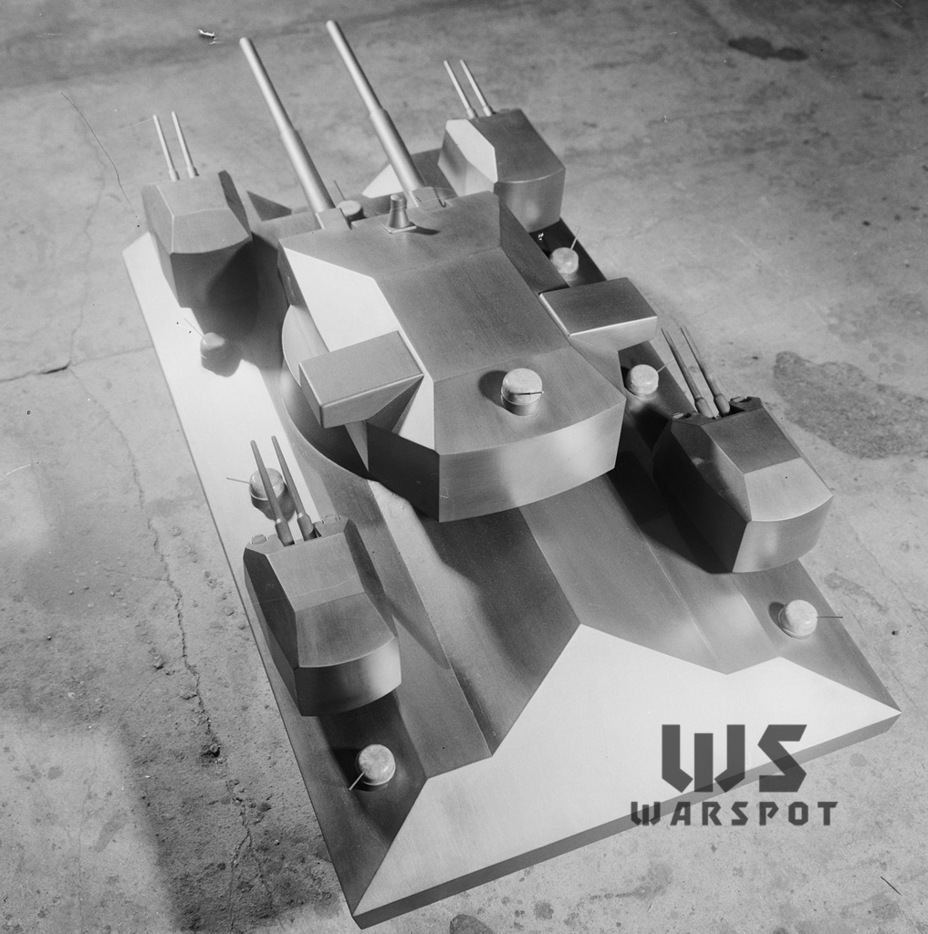
The chassis was also changed. Due to serious changes to the armament, the turret moved forward and the engine compartment moved back. The chassis became even more similar to the tank that Grotte designed for the USSR. The number of road wheel groups was reduced to 6 per side, but the diameter increased significantly. The position of HD 151 turrets was improved.
Futile work
The five-turret version was not in demand for long. The impressive armament had one drawback: excessive mass. Calculations conducted by Grotte showed that the mass of the project already passed the 1000 ton mark. This was not the intention of the designer, who expected his creation to have a power to weight ratio of 16 hp/ton. With this power, he expected the top speed of the tank to be 40 kph.
A third variant of the tank was created, which is considered «canonical». Destroyer turrets were discarded, and the hull was seriously reworked. Grote prepared a draft project by October 10th, 1942. On October 17th it was shown to Speer.
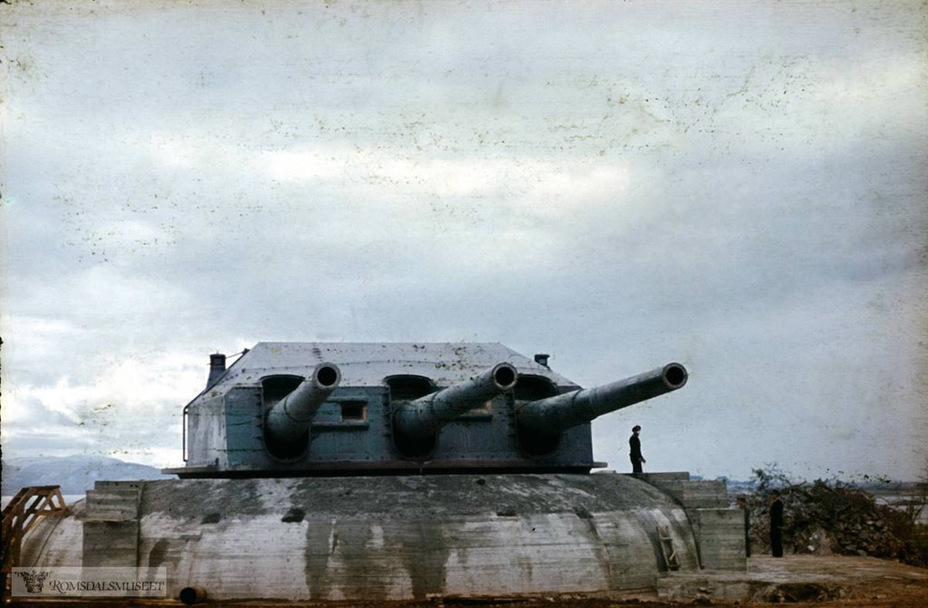
Correspondence between Grotte and Muller picked up after October. The issue of the 128 mm gun, which became a point of contention for enthusiasts of military history, was raised. Grotte wrote:
«I tried to install a 12.8 cm AA gun instead of an 8.8 cm deck gun installed in the rear. The weight is much greater, of course, but this layout is only a proposal, and perhaps your specialists can suggest lighter guns as a replacement. I received information from the Kriegsmarine regarding the ammunition racks, which could be altered based on naval experience."
It seems that it was not a naval gun that was being considered. However, neither the gun mount in the rear nor drafts shown to Speer survived. Blueprints that Grotte sent to Krupp on October 31st were not preserved either. Perhaps they were lost during the bombings of Krupp properties in 1943.
Nevertheless, the surviving information allows us to see where the index P.1000 came from. It was the mass of the tank. However, the index was almost never used in correspondence. According to the specifications of the contract, the P.1000 had the following characteristics:
- Full length: 39 meters
- Hull length: 35 meters
- Full width: 14 meters
- Full height: 11 meters
- Hull height: 6.5 meters
- Contact surface length: 21 meters
- Track width: 3 tracks of 1.2 meters each
- Ground pressure: 0.54 kg/cm²
- Top speed: 40 kph
- Total mass: 1000 tons
Mass distribution:
- Armament: 300 tons
- Armour: 200 tons
- Hull: 200 tons
- Running gear: 100 tons
- Engine and transmission: 100 tons
Perhaps this might sound unexpected, but the German industry could produce the P.1000 at the time. Recall that the main reason why the Maus did not enter production was the destruction of Krupp factories by British bombers. Muller also nearly managed to push the «Dicker Gustav» through into production. A 1000 ton tank sounds madness, but building two colossal 800 mm cannons that were 47 meters in length and weighed 1350 tons each was too. This monster had to be transported by doubled up railroads. It took 3-6 weeks to prepare firing positions. This «achievement» was only used once during the assault on Sevastopol, with laughable results.
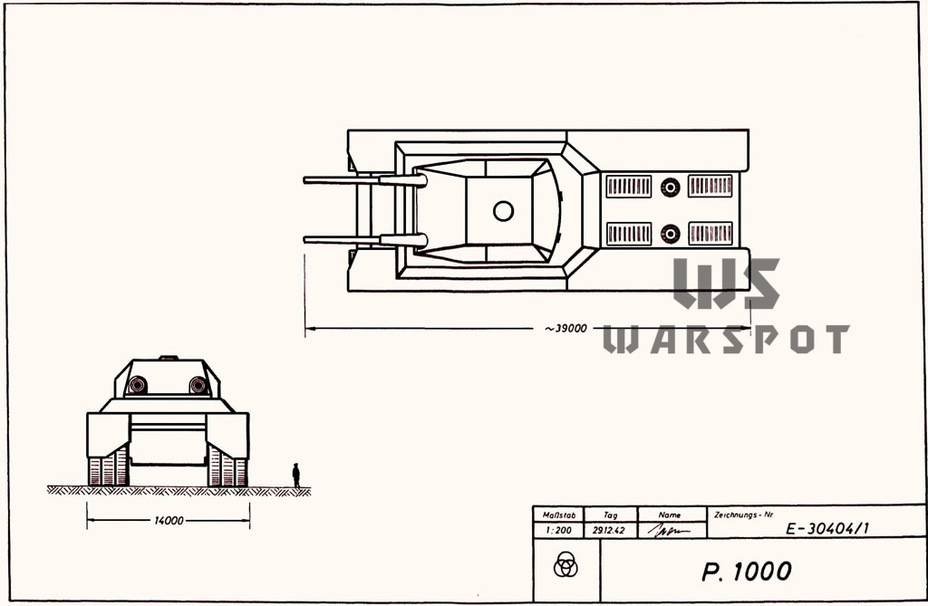
At this point, the idea of a colossal German tank could have made its exit, since Speer tried to get rid of such horrors. However, work on similar projects continued until May of 1944, but without Grotte. Muller skilfully distanced himself from the project and its author, as mentioned in minutes of a meeting dated December 13th, 1942.
«Grotte presented photos of his model, where the turrets were more organically joined with the surface of the tank. It seems that he already knew that the minister had no intention of continuing the development of this project, and that the Krupp company received orders for the development of a similar project. I did not get into detailed, but I confirmed this information, and I mentioned that our tank had a different tactical purpose, and as such we regrettably could not use any of his work. Grotte took that information into account."
Work on the P.1000 stopped to make room for Krupp's own project. Let us return to it shortly. The turrets meant for the P.1000 had their own fates. Turret B (Bruno) was sent to the Fjell coastal battery near Bergen in Norway. Thanks to its maximum range of 41 km, it handled the task of protecting the coastal waters splendidly. After the war it was disassembled, and only the concrete foundation remains. Turret C (Caesar) was installed in the Oerlandet battery, which covered the approach to Trondheim. After the war, the battery remained in service with the Norwegian army under the name Austrått. In 1977 the battery was excluded from the Norwegian coastal defense system, but the gun survived. In 1991 Austrått became a museum. Anyone can see this miracle of engineering thought, especially as most of the internal mechanisms are still intact.
Both turrets lost their rangefinders and their armoured covers upon installation, as was planned to do when they were installed on the tank.
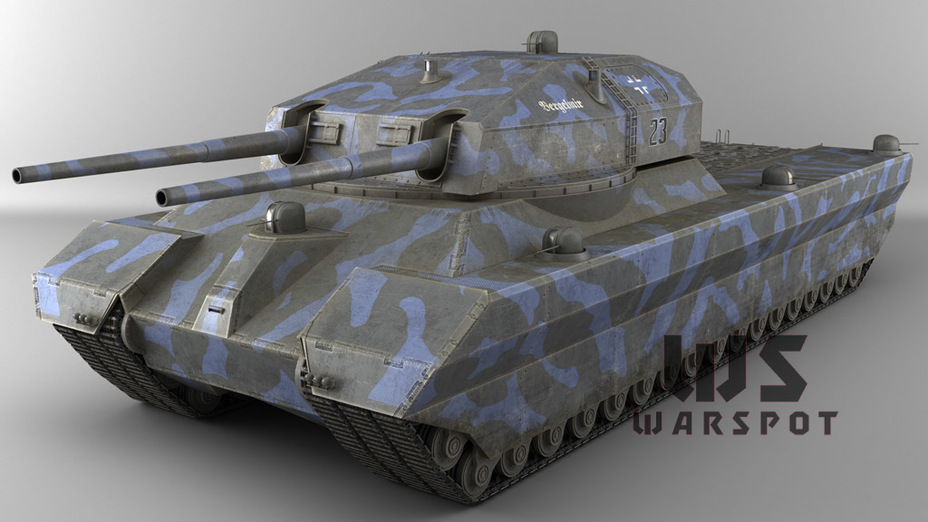
Krupp received orders to develop a similar tank, which left the P.1000 in the dust. The result of Krupp's work is sometimes called the P.1500, but this name was not used even once in documents, and its mass far eclipsed 1500 tons.
Sometimes the index P.1500 is mistakenly used to refer to the tracked version of the «Dicker Gustav» with up to 250 mm of armour, two 150 mm gun turrets, and 4 submarine diesels. That was the result of interpretation of two sentences from Walther Spielberger's book Special Panzers.
Thanks to the efforts of Michael Froelich, it was discovered that the «Dicker Gustav» had nothing in common with Krupp's tank. Specifications dated February 4th, 1943, describe two variants: an 800 ton tank with a 600 mm mortar and an 1800 ton tank with an 800 mm mortar. The 1800 ton tank was 25 m long, 12.8 m wide, and up to 8.25 m tall. The thickness of the front armour was 250 mm, and the sides were 200 mm thick. The vehicle was propelled by four Daimler-Benz MB.501 engines with a total output of 8000 hp. The top speed was miserly: 7 kph.
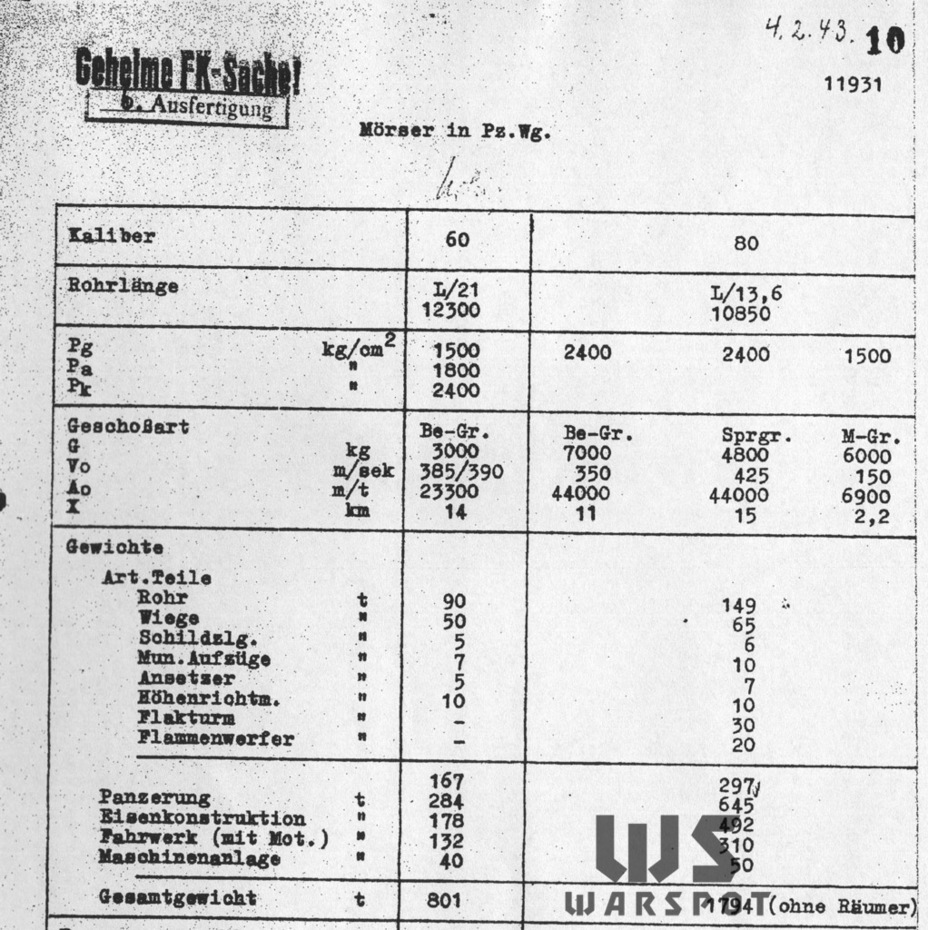
Unlike with the P.1000, the progress did not reach even the contract stage. The fate of the P.1500 was very short. However, this was not the end of German land battleships. The next one was the Panzermörser Urling, a development of the 800 ton variant of the P.1500. Its mass was 1049 tons, but the armour was 150-200 mm in the front and 100 mm along the sides. A 600 mm mortar would be used as armament. The Urling was 22 m long, 10.5 m wide, and 7 meters tall. 8 MB 507 engines with an electric transmission would be used. The top speed was expected to be 10 kph. The first Urling was expected by January 1st, 1945, and 5 were planned in total. The last one was planned for delivery on February 1st, 1946, perhaps the only tank that definitely meets the scope of «Panzerwaffe '46».
The last activity on the Urling project is dated June 1944, when a gas turbine engine was considered. No other information on this project survives, aside from correspondence.
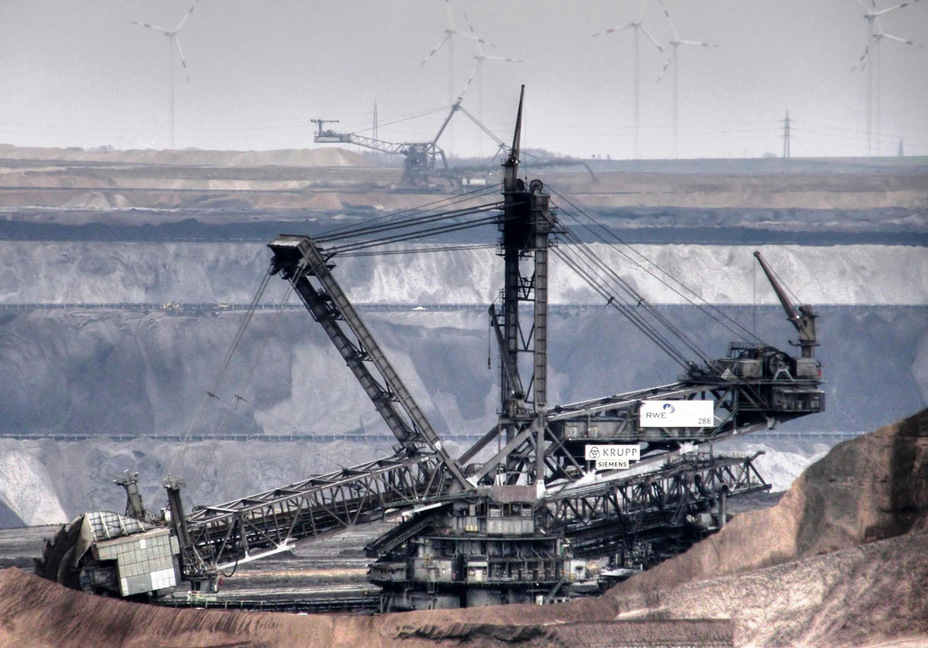
Reality sometimes surpasses even the boldest fantasies. Krupp managed to create some land monsters after all. Compared to them, the P.1000 and P.1500 would have been child's toys. However, this is a strictly peaceful vehicle. Krupp built the Bagger 288 excavator in 1978, the longest land vehicle in the world. This 240 meter giant weighs 13,500 tons, and is only 5 meters short of the length of the LZ 130 Graf Zeppelin II, history's largest airship. The 96 meter tall excavator can process 10,000 cubic meters of rocks. The honour of being the heaviest lang vehicle belongs to another German vehicle, the MAN TAKRAF RB293 or Bagger 293. It is slightly shorter than its competitor, but clocks in at 14,200 tons.
Translated by Peter Samsonov. Read more interesting tank articles on his blog Tank Archives.
Sources:
- Russian State Military Archive
- BAMA (Bundesarchiv)
- Special Panzer Variants: Development — Production – Operations, Walter J. Spielberger, Hilary L. Doyle, Schiffer Publishing, 2007
- Der Panzer-Kampfwagen Tiger und seine Abarten, Walter J. Spielberger Motorbuch verlag, 1987, ISBN 3-87943-456-5
- Überschwere Panzerprojekte: Konzepte und Entwürfe der Wehrmacht, Michael Fröhlich, Motorbuch verlag, 2016, ISBN 978-3613039254
- Archive of Michael Frelikh
- http://www.romsdalsmuseet.no
- Author's photo archive






